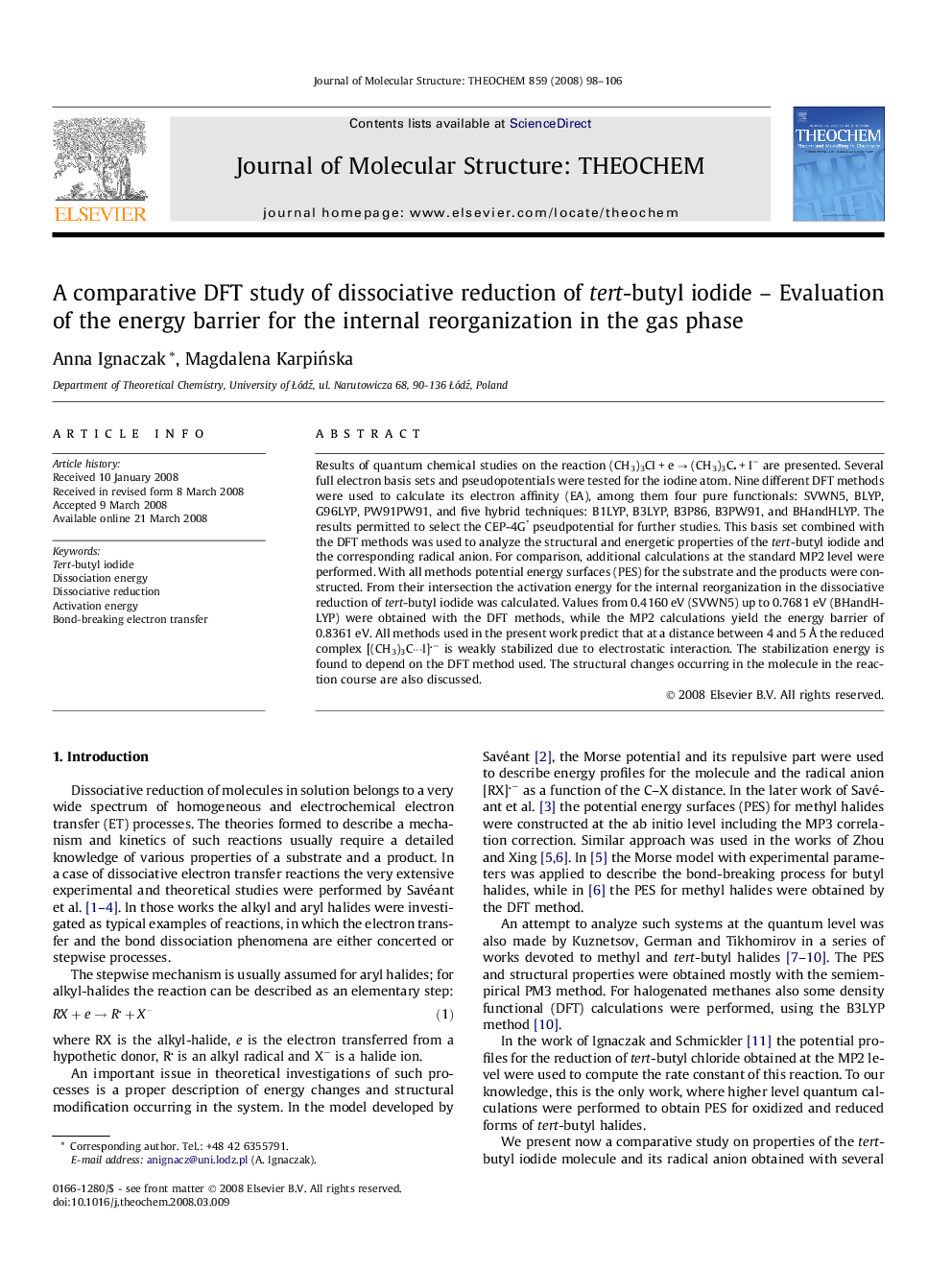| Article ID | Journal | Published Year | Pages | File Type |
|---|---|---|---|---|
| 5417691 | Journal of Molecular Structure: THEOCHEM | 2008 | 9 Pages |
Abstract
Results of quantum chemical studies on the reaction (CH3)3CI + e â (CH3)3C + Iâ are presented. Several full electron basis sets and pseudopotentials were tested for the iodine atom. Nine different DFT methods were used to calculate its electron affinity (EA), among them four pure functionals: SVWN5, BLYP, G96LYP, PW91PW91, and five hybrid techniques: B1LYP, B3LYP, B3P86, B3PW91, and BHandHLYP. The results permitted to select the CEP-4Gâ pseudpotential for further studies. This basis set combined with the DFT methods was used to analyze the structural and energetic properties of the tert-butyl iodide and the corresponding radical anion. For comparison, additional calculations at the standard MP2 level were performed. With all methods potential energy surfaces (PES) for the substrate and the products were constructed. From their intersection the activation energy for the internal reorganization in the dissociative reduction of tert-butyl iodide was calculated. Values from 0.4160 eV (SVWN5) up to 0.7681 eV (BHandHLYP) were obtained with the DFT methods, while the MP2 calculations yield the energy barrier of 0.8361 eV. All methods used in the present work predict that at a distance between 4 and 5 Ã
the reduced complex [(CH3)3C···I]â is weakly stabilized due to electrostatic interaction. The stabilization energy is found to depend on the DFT method used. The structural changes occurring in the molecule in the reaction course are also discussed.
Keywords
Related Topics
Physical Sciences and Engineering
Chemistry
Physical and Theoretical Chemistry
Authors
Anna Ignaczak, Magdalena KarpiÅska,
